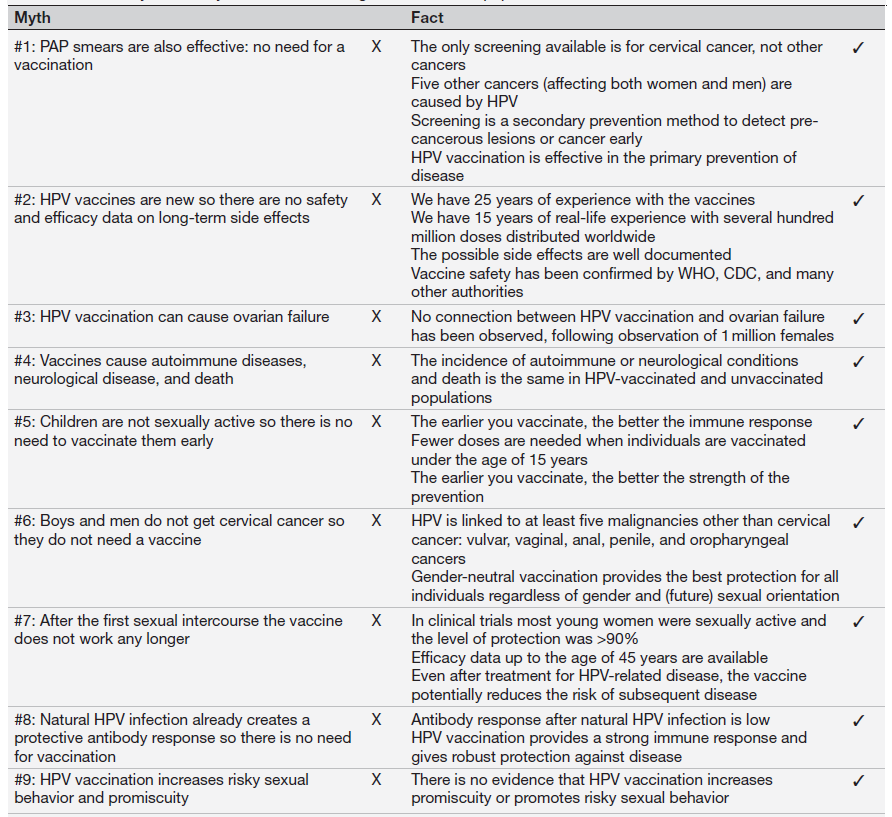Human papiloma virus
Myths & Facts
Vaccine hesitancy is a global challenge. This has become even more visible during the COVID-19 pandemic. In most European countries with a sufficient vaccine supply, public programs failed to achieve coverage of more than 80%. There are various reasons for this phenomenon: in addition to political positions and religious beliefs, many would rather rely on opinions than facts.
These opinions are nurtured by myths, repeated over social media and the internet. Vaccines preventing infections, disease, and cancer caused by human papillomavirus (HPV) have been available for more than 15 years. After clinical trials provided data from tens of thousands of study participants, we now have the experience and observational data from hundreds of millions of vaccine doses distributed worldwide.
These vaccines have demonstrated that they prevent not only HPV infections and pre-invasive disease, but also invasive cervical cancer. We have identified nine myths that we wish to discuss and dispel. This article was written by the members of the ESGO Prevention Committee and was publised in the International Journal of Gynecological Cancer in 2022.




